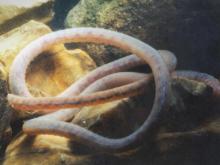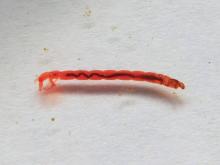Aquatic Invertebrates
Media

Species Types
Scientific Name
Various species in the subclass Hirudinea
Description
Most people are repulsed by leeches. But once you get past the fact that many species are parasitic bloodsuckers, you will discover that they are fascinating creatures with an important role in nature.
Media

Species Types
Scientific Name
Tubifex spp. and other aquatic tubificid annelids
Description
Tubificid worms, as a group, include the tubifex worms that aquarists feed to their pet fish. These segmented worms are related to earthworms and like them are detritus eaters.
Media

Species Types
Scientific Name
Nearly 1,100 species in North America
Description
Midge larvae look something like thin aquatic inchworms. They can be clear, whitish, olive, tan, or bright red. They occur in a variety of aquatic habitats. As adults, they resemble mosquitoes but they never bite.
Media

Species Types
Scientific Name
Podura aquatica
Description
In early spring, clusters of water springtails float on the surface of quiet waters, on muddy banks, and on protruding objects. Adults are bluish gray with reddish appendages.
See Also
About Aquatic Invertebrates in Missouri
Missouri's streams, lakes, and other aquatic habitats hold thousands of kinds of invertebrates — worms, freshwater mussels, snails, crayfish, insects, and other animals without backbones. These creatures are vital links in the aquatic food chain, and their presence and numbers tell us a lot about water quality.





















